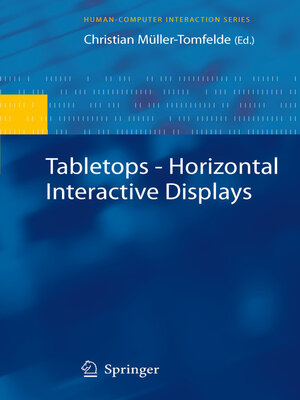Tabletops--Horizontal Interactive Displays
ebook ∣ Human–Computer Interaction Series
By Christian Müller-Tomfelde

Sign up to save your library
With an OverDrive account, you can save your favorite libraries for at-a-glance information about availability. Find out more about OverDrive accounts.
Find this title in Libby, the library reading app by OverDrive.



Search for a digital library with this title
Title found at these libraries:
| Library Name | Distance |
|---|---|
| Loading... |
The objects displayed on a table can take multiple forms. In meetings, it is still very often printed paper although its content was originally created on a computer. The content can also be a "table", but now in the mathematical sense, showing, e. g. , the budget of a project. Then, we have a "table" on the table. Most often, the computer-generated contents are subject of frequent changes or dynamic in nature. It is a logical consequence to avoid the detour and the inherent media break by transforming the surface of the table into a display able to show media that are active and can be computer-generated and computer-controlled. At the same time, it is desirable to maintain the inherent features and affordances of working with the objects and the contents while sitting or standing around a table. Electronic Meeting Rooms On the basis of these and other elaborate considerations, we started to design in 1992/1993 an electronic meeting room in Darmstadt at GMD-IPSI (later Fraunhofer IPSI). The setup of our custom-built DOLPHIN-System consisted of a "traditional" large rectangular wooden table with four physically integrated workstation-like computers with at screens. This set-up was complemented by linking a large ver- cal pen-operated interactive display, at that time the rst LiveBoard outside of Xerox PARC (two of which I was able to get to Darmstadt after my stay at Xerox PARC in 1990).







